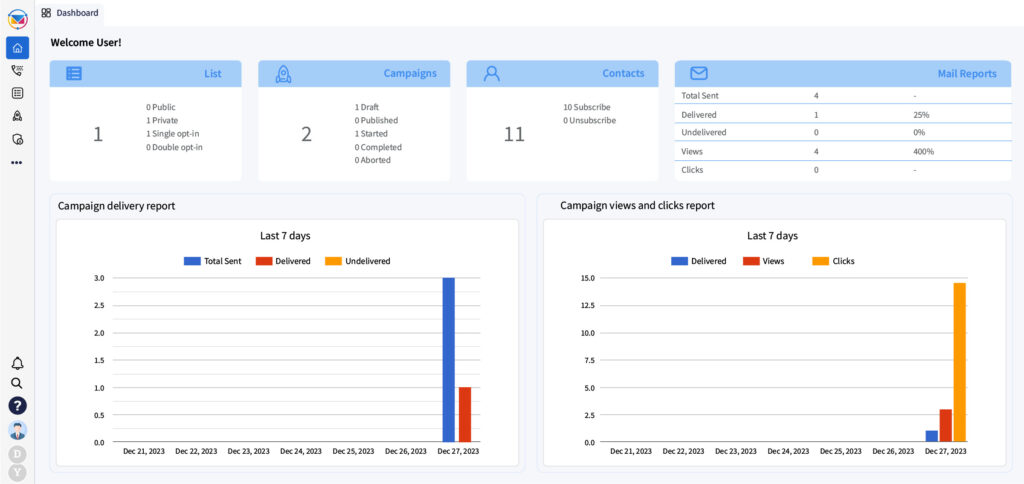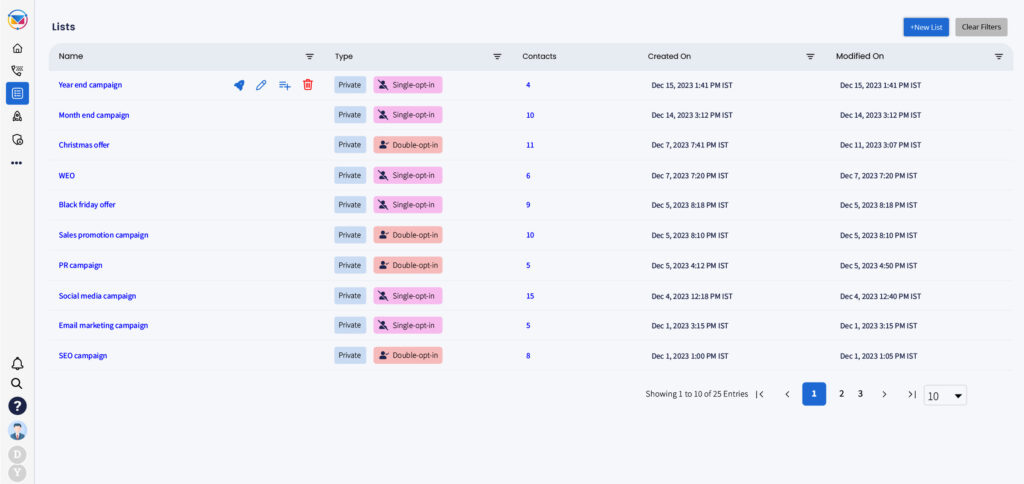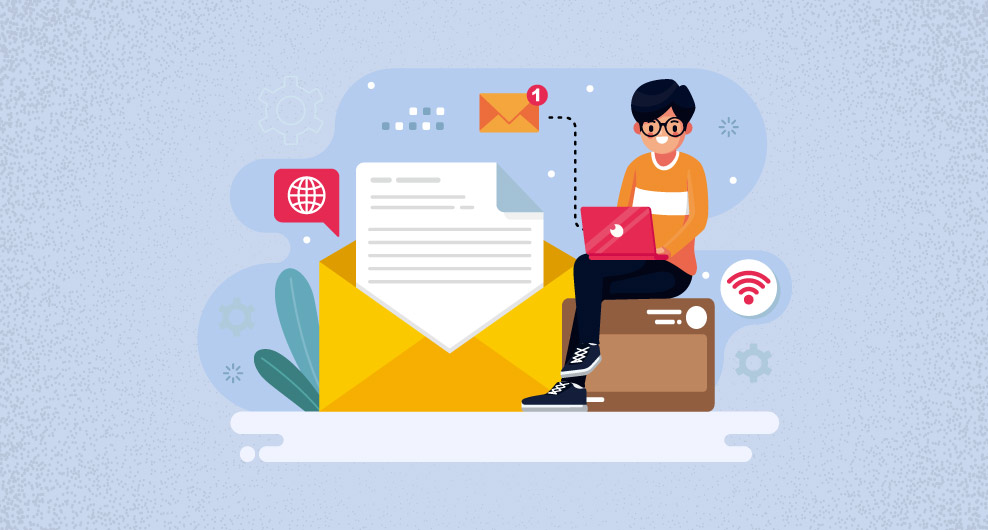Table of Contents
Navigating the email inbox is akin to entering a competitive arena where only the most compelling emails prevail. Securing a spot in the inbox is the initial challenge, yet the true feat lies in elevating email engagement by motivating subscribers to take action.
Across various industries, the average open rates for marketing emails hover around 21.33%, indicating that a significant portion of these messages is discarded without being opened. Some emails don’t even reach the inbox, presenting a deliverability challenge, though we’ll delve into that topic in a separate post.
Let’s be clear—email remains the primary channel for businesses to connect with customers. However, given the sheer volume of emails inundating recipients, it has become more crucial than ever to experiment with diverse email strategies that can effectively drive engagement.
This article will explore key email marketing tactics to stand out in the inbox and enhance engagement rates, ranging from crafting captivating subject lines to delivering personalized content.
Before we delve into these strategies, it’s essential to address a fundamental question: How do you measure email engagement?
Email Engagement Metrics

Email engagement metrics are crucial indicators that help assess the effectiveness of an email marketing campaign. These metrics provide insights into how subscribers are interacting with your emails. Here are some key email engagement metrics:
Open Rate:
- Definition: The percentage of recipients who opened your email.
- Calculation: (Number of opens / Number of delivered emails) * 100.
- Significance: A higher open rate generally indicates that your subject lines are compelling, and recipients find your emails interesting.
Click-Through Rate (CTR):
- Definition: The percentage of recipients who clicked on one or more links within your email.
- Calculation: (Number of clicks / Number of delivered emails) * 100.
- Significance: CTR measures the effectiveness of your email content and the relevance of your call-to-action.
Conversion Rate:
- Definition: The percentage of recipients who completed the desired action after clicking on a link in your email.
- Calculation: (Number of conversions / Number of clicks) * 100.
- Significance: This metric indicates how well your email campaign is achieving its goals, whether it’s making a purchase, signing up for an event, or other predefined actions.
Bounce Rate:
- Definition: The percentage of sent emails that were not delivered to the recipient’s inbox.
- Calculation: (Number of bounced emails / Number of sent emails) * 100.
- Significance: Bounces can be classified as either “hard bounces” (permanent delivery failures) or “soft bounces” (temporary issues). A high bounce rate may impact your sender reputation.
Unsubscribe Rate:
- Definition: The percentage of recipients who opted out of your email list after receiving a particular email.
- Calculation: (Number of unsubscribes / Number of delivered emails) * 100.
- Significance: Monitoring the unsubscribe rate helps gauge whether your content aligns with the expectations and interests of your audience.
Forward Rate:
- Definition: The percentage of recipients who forward your email to others.
- Calculation: (Number of forwards / Number of delivered emails) * 100.
- Significance: A high forward rate suggests that your content is shareable and resonates with your audience.
Email Sharing/Forwarding:
- Definition: The number of times an email is shared or forwarded to someone else.
- Significance: Indicates the virality of your content and how well it resonates with your audience.
Read Length:
- Definition: The average time a recipient spends reading your email.
- Significance: Provides insights into the engagement level and interest of your audience in your content.
Monitoring and analyzing these email engagement metrics can help you refine your email marketing strategy, improve content relevance, and enhance overall campaign effectiveness.
8 Proven Tactics to Boost Email Engagement

Boosting email engagement is crucial for the success of your email marketing campaigns. Here are eight proven tactics to enhance your email engagement:
- Compelling Subject Lines: Craft subject lines that captivate your audience’s attention. Personalization, such as using the recipient’s name, and creating a sense of urgency or curiosity can significantly increase open rates. Experiment with different approaches to understand what resonates best with your audience.
- Segmentation and Personalization: Divide your email list into segments based on various factors such as demographics, purchase history, or engagement levels. Tailor your content to each segment, delivering personalized messages that align with the specific interests and behaviors of your audience. This ensures that your emails are more relevant and engaging for each recipient.
- Clear Call-to-Action (CTA): Every email should have a clear and compelling call-to-action. Whether it’s encouraging a purchase, clicking a link, or signing up for an event, the CTA should stand out and guide recipients on the desired action. Use action-oriented language and create a sense of urgency to prompt immediate responses.
- Responsive Design: With a growing number of users accessing emails on various devices, it’s crucial to ensure that your emails are mobile-friendly and display properly across different screen sizes. Responsive design enhances the user experience, making it easy for recipients to engage with your content, regardless of the device they are using.
- A/B Testing: Conduct A/B testing on different elements of your emails, such as subject lines, content, images, or CTAs. Analyze the performance of each variant to understand what resonates best with your audience. Use these insights to refine and optimize your email campaigns for better engagement over time.
- Interactive Content: Incorporate interactive elements into your emails to encourage active engagement. This could include polls, quizzes, clickable images, or other interactive features. Interactive content not only captures attention but also provides a unique and enjoyable experience for your subscribers.
- Email Automation: Implement email automation to send timely and relevant messages based on user actions or specific triggers. Automation ensures that your subscribers receive the right content at the right time, increasing the chances of engagement. Examples of automated campaigns include welcome emails, abandoned cart reminders, and post-purchase follow-ups.
- Personalized Recommendations: Leverage data to provide personalized product or content recommendations to your audience. Analyze past behaviors, preferences, and interactions to offer tailored suggestions that align with individual interests. Personalized recommendations make your emails more valuable and increase the likelihood of engagement as recipients see content that resonates with their preferences.
Enhance your Marketing Engagement using YoroConnect
Now that you’ve mastered the art of creating compelling subject lines, designing captivating email content, and effectively segmenting your email lists, you’re on the path to boosting customer email engagement.
However, executing these strategies can be challenging without the right tools. Enter YoroConnect — your solution to overcoming these challenges. Marketing Campaigns, powered by YoroConnect, offers a suite of features, including email marketing templates, user-friendly drag-and-drop interfaces, automation capabilities, and robust list management tools. These resources empower you with the essential tools to elevate the engagement levels of your emails.
Take advantage of YoroConnect‘s free trial today and begin implementing these strategies to boost your email engagement.




